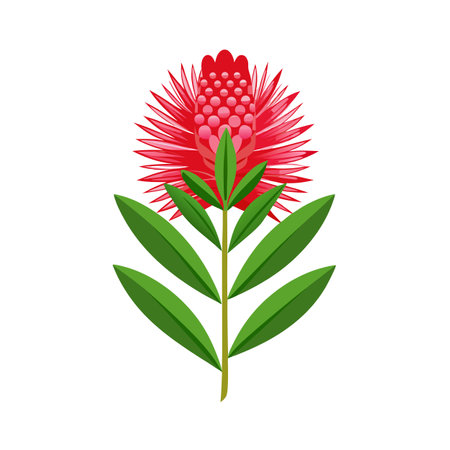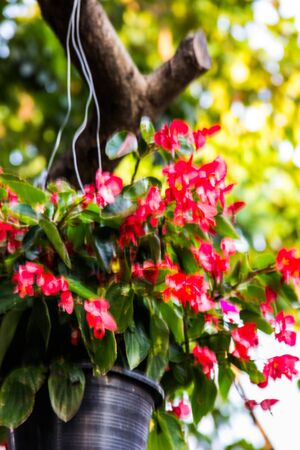Introduction to Hibiscus & Jasmine Cultivation in Rural India
Hibiscus and jasmine, locally known as “Gudhal” and “Mogra” respectively, are much more than just beautiful flowers in Indian villages. Their cultivation has deep roots in rural India, where these blooms hold immense cultural, religious, and economic significance. For centuries, hibiscus and jasmine have been an integral part of daily life—adorning temples, gracing local festivals, and being woven into garlands for weddings and rituals. Village communities traditionally grow these flowers in kitchen gardens or small plots, passing down cultivation techniques through generations. The flowers are not only valued for their fragrance and vibrant colours but also play a vital role in Ayurveda and home remedies, with hibiscus used for hair care and jasmine celebrated for its calming properties. As commercial farming of hibiscus and jasmine is gaining momentum across rural belts—from Tamil Nadu’s flower markets to Maharashtra’s village mandis—these crops present both opportunities for sustainable livelihoods and challenges rooted in tradition, market access, and changing agricultural practices.
Farming Practices & Local Varieties
India’s diverse agro-ecological landscape allows for the successful cultivation of hibiscus and jasmine, both highly valued for their commercial potential in local and export markets. Across Indian villages, traditional farming practices are often blended with modern techniques to enhance yield and quality. Most smallholder farmers rely on family labour, organic manure like cow dung, and basic irrigation methods such as furrow or basin irrigation. Progressive growers, especially those closer to urban markets, may adopt drip irrigation systems and use improved organic pest management solutions.
Preferred Local Varieties
The choice of plant variety plays a crucial role in commercial success. Indian farmers tend to favour varieties that are resilient to local pests and diseases, can withstand periodic droughts or heavy rainfall, and match market preferences for flower size and fragrance.
| Crop | Popular Varieties | Notable Features |
|---|---|---|
| Hibiscus | Lal Pari, Arka Bahar, Krishna Red | Large blooms, deep colour, high petal count |
| Jasmine (Mogra) | Co-1, Co-2 (Tamil Nadu), Dwarf (Andhra Pradesh) | Strong fragrance, high yield, suitable for garlands & oil extraction |
| Jasmine (Chameli) | Kunda (North India), Madurai Malli (Tamil Nadu) | Adapted to local climate, preferred for religious purposes |
Soil Conditions & Preparation
Both hibiscus and jasmine prefer well-drained loamy or sandy-loam soils rich in organic matter. In many Indian villages, farmers enrich their fields with vermicompost or farmyard manure before planting. Soil pH is ideally maintained between 6.0 to 7.5. Farmers in coastal regions often add gypsum to mitigate saline conditions, while those in interior Deccan plateau focus on mulching to conserve moisture during dry spells.
Climate Suitability in Indian Agro-Ecological Regions
The tropical and sub-tropical climate zones of South India—especially Tamil Nadu, Karnataka, Andhra Pradesh, and Kerala—are highly favourable for year-round jasmine production due to moderate temperatures and humidity levels. Hibiscus thrives best in warm climates with plenty of sunshine; regions like West Bengal and Odisha see good yields when monsoon rains are well-distributed. Meanwhile, North Indian states grow chameli varieties that tolerate cooler winters but bloom profusely during the onset of summer.
Key Takeaways for Commercial Growers:
- Select region-specific varieties based on climate resilience and market demand.
- Adopt integrated nutrient management using local resources for sustainable soil health.
- Utilise water-efficient irrigation techniques suitable for small landholdings.
- Stay informed about pest-resistant varieties through Krishi Vigyan Kendras or agri-extension services.
This blend of traditional wisdom with locally adapted modern techniques forms the backbone of successful commercial hibiscus and jasmine farming in Indian rural landscapes.

3. Market Demand and Business Opportunities
India’s love affair with hibiscus and jasmine is not just cultural but also deeply commercial. Both flowers hold an essential place in daily rituals, religious ceremonies, weddings, and personal adornment, ensuring steady domestic demand throughout the year. In urban centres like Mumbai, Chennai, and Bangalore, the need for fresh garlands, temple offerings, and floral decorations has created thriving local markets. Additionally, the growing popularity of puja flowers through e-commerce platforms and mobile apps reflects a shift towards digital marketing channels that even rural producers can tap into with the right support.
Domestic & International Demand Analysis
The demand for hibiscus and jasmine extends far beyond India’s borders. Indian jasmine, especially Madurai malli, is highly prized in Southeast Asian countries and by the Indian diaspora in the Middle East, Europe, and North America. Hibiscus petals are increasingly sought after in global markets for their use in herbal teas (like hibiscus tea), cosmetics, and health supplements due to their antioxidant properties. This opens up significant export opportunities for small-scale farmers if they can meet international quality standards.
Value Addition Opportunities
Apart from selling fresh flowers, value addition presents lucrative prospects. Jasmine oil extraction is a time-honoured industry in Tamil Nadu and Andhra Pradesh; its use in perfumes and aromatherapy commands high prices. Hibiscus can be processed into powders for hair care products or dried for herbal infusions. By-products such as flower waste can be converted into organic compost or natural dyes, enabling farmers to diversify revenue streams and reduce wastage.
Emerging Market Trends
The ‘natural’ wave is sweeping across Indian urban consumers—floral extracts in wellness products, organic teas, and Ayurvedic formulations are all trending upward. International buyers are also looking for certified organic produce, traceability, and eco-friendly packaging. For enterprising village entrepreneurs, collaborating with self-help groups (SHGs) or farmer producer organisations (FPOs) can offer better bargaining power and access to larger contracts. With proactive government schemes supporting floriculture exports under APEDA and MIDH, Indian villages have a real shot at flourishing on the global flower map.
4. Key Challenges Faced by Farmers
Despite the growing demand for hibiscus and jasmine in the Indian floriculture sector, village farmers face a unique set of challenges that can hamper commercial cultivation. Let’s explore some of the most pressing issues encountered on the ground.
Pest Management
Managing pests and diseases is a constant struggle, especially since both hibiscus and jasmine are susceptible to common threats like aphids, red spider mites, thrips, and fungal infections. Many small farmers lack access to modern pest-control solutions or training in integrated pest management (IPM), leading to crop losses and increased expenditure on chemical pesticides—sometimes with negative effects on soil health and yield quality.
Price Fluctuations & Market Uncertainty
The market price for flowers is highly volatile. Festival seasons and wedding periods can bring high prices, while oversupply or off-season months may lead to distress sales. Without proper storage facilities or collective bargaining power, individual farmers often sell at whatever price middlemen offer.
| Season | Average Farm Gate Price (per kg) |
|---|---|
| Peak festival | ₹120-₹150 |
| Off-season | ₹40-₹60 |
Influence of Middlemen
Most rural growers depend on local traders or commission agents to sell their produce in wholesale markets (mandis). These middlemen often dictate prices, delay payments, or take hefty commissions, leaving farmers with limited profit margins.
Common Issues with Middlemen:
- Lack of price transparency
- No direct access to end buyers
- Payment delays
Water Scarcity & Irrigation Issues
Irrigation remains a major challenge for flower farming in many Indian villages. While hibiscus is relatively drought-tolerant, jasmine requires regular watering for optimal flowering. Erratic monsoons, depleting groundwater levels, and inadequate irrigation infrastructure force many farmers to rely on expensive borewells or tanker water—raising production costs significantly.
Access to Agri-support Schemes
The government has several schemes—like PM-Kisan, horticulture subsidies, crop insurance, and training programs—to support floriculture. However, a large section of rural flower growers remain unaware of these benefits due to poor information dissemination, complex paperwork, and limited digital literacy.
| Challenge | Impact on Farmers |
|---|---|
| Pest & disease outbreaks | Crops destroyed; lower yields |
| Market price volatility | Unstable income; financial stress |
| Middlemen dominance | Lack of fair pricing; delayed payments |
| Irrigation difficulties | Poor flowering; higher costs |
| Poor scheme awareness | Missed subsidies; less support received |
In summary, these challenges are deeply rooted in the realities of rural India’s agricultural ecosystem. Overcoming them will require not just policy intervention but also grassroots-level awareness building and capacity enhancement for smallholder flower farmers.
5. Role of Women and Community Participation
Empowering Women in Flower Cultivation
In many Indian villages, women play a pivotal role in commercial hibiscus and jasmine farming. Traditionally involved in household gardens, women are now stepping into leadership positions within organized flower cultivation ventures. Their participation ranges from sowing seeds to harvesting blossoms and even handling post-harvest processing. This shift is gradually altering the rural landscape, providing women with greater financial independence and respect within their communities.
The Rise of Self-Help Groups (SHGs)
Self-help groups (SHGs) have emerged as a powerful force behind the success of flower farming in rural India. These groups, often comprised primarily of women, pool resources and share knowledge to maximize productivity and profit. By working collectively, SHGs facilitate bulk purchasing of quality seeds and fertilizers, negotiate better prices for their produce, and access government schemes or microfinance options more easily than individual farmers could.
Collective Impact on Rural Livelihoods
The collective efforts of women and SHGs have led to significant socio-economic improvements in many villages. Increased household incomes have enabled better access to education for children, improved nutrition, and enhanced healthcare. The success stories from states like Tamil Nadu, Karnataka, and Andhra Pradesh highlight how community-driven approaches in flower farming foster self-reliance and entrepreneurship at the grassroots level.
Challenges Faced by Women Farmers
Despite these successes, women still face challenges such as limited land ownership rights, lack of direct market access, and the need for technical training. However, ongoing government initiatives, NGO support, and peer-to-peer learning within SHGs are gradually addressing these barriers. As more women become actively involved in commercial hibiscus and jasmine farming, the prospects for sustainable rural development continue to brighten across India.
6. Technological Innovations and Government Initiatives
In the past few years, Indian floriculture—especially commercial hibiscus and jasmine farming—has witnessed a remarkable transformation due to the adoption of new technologies and proactive government support. These advancements are helping rural farmers enhance productivity, streamline operations, and access lucrative markets more efficiently.
Overview of Recent Advancements
Modern agricultural practices have found their way into Indian villages. Farmers are increasingly embracing drip irrigation systems to conserve water, greenhouses for controlled cultivation, and improved varieties of hibiscus and jasmine that offer higher yields and better disease resistance. Precision farming using sensors and mobile apps allows growers to monitor soil moisture and crop health, leading to timely interventions and reduced input costs.
Role of Digital Platforms
The digital revolution has also reached rural India, empowering flower growers with information at their fingertips. Mobile applications like Kisan Suvidha, IFFCO Kisan, and AgriApp deliver weather updates, pest management tips, and real-time price information directly to farmers’ smartphones. E-commerce platforms such as Ugaoo, BigHaat, and even WhatsApp groups enable small-scale floriculturists to connect with buyers across cities and states, bypassing traditional middlemen.
Agri-Extension Programs
On-ground extension officers from the Department of Agriculture and various NGOs regularly organize workshops in villages to educate farmers about best practices in floriculture. These programs include field demonstrations on propagation techniques, integrated pest management, organic certification processes, and post-harvest handling—ensuring that even first-time growers can participate profitably in commercial flower farming.
Government Schemes Supporting Floriculture
The Indian government has rolled out several schemes targeting the development of floriculture clusters in rural areas. The National Horticulture Mission (NHM) provides subsidies for setting up polyhouses, purchasing planting materials, and accessing cold storage facilities. The Pradhan Mantri Krishi Sinchayee Yojana (PMKSY) supports micro-irrigation infrastructure crucial for flower crops. Furthermore, state horticulture departments often run special training camps and facilitate bank linkages for credit assistance under Mudra Yojana or NABARD’s schemes.
Challenges in Technology Adoption
Despite these positive strides, challenges persist. Many small farmers face barriers such as limited awareness about digital solutions, insufficient internet connectivity in remote areas, or lack of technical know-how. Bridging these gaps will require sustained outreach efforts and tailored training modules in local languages to ensure inclusive growth within the sector.
Overall, technological innovations coupled with robust government initiatives are shaping a promising future for commercial hibiscus and jasmine farming in Indian villages. With continued focus on skill-building and infrastructure development, rural floriculturists stand poised to flourish both domestically and internationally.
7. Future Prospects and Sustainable Growth
As Indian villages continue to embrace commercial hibiscus and jasmine farming, the path ahead is filled with both hope and responsibility. The increasing global demand for natural flowers in perfumery, cosmetics, and religious ceremonies presents a golden opportunity for rural farmers to expand their operations and enhance their livelihoods. However, this growth must be balanced with eco-friendly practices and a commitment to sustainable agriculture.
Expanding Horizons: Scaling Up Flower Farming
The potential for expansion in hibiscus and jasmine cultivation is significant, especially as urban markets and export avenues open up. With the right guidance from local agricultural extension officers and government schemes such as the National Horticulture Mission, smallholders can access quality planting materials, technical know-how, and financial support. Collaborative farming models like Farmer Producer Organisations (FPOs) are gaining popularity across Tamil Nadu, Karnataka, and Andhra Pradesh, enabling even marginal farmers to negotiate better prices and invest in modern infrastructure.
Embracing Eco-Friendly Practices
For long-term success, it is vital to integrate eco-friendly methods into every stage of flower cultivation. Many progressive farmers are already adopting organic manures such as vermicompost or Panchagavya, reducing dependency on chemical fertilizers. Intercropping hibiscus or jasmine with marigold or vegetables is also becoming common, helping maintain soil fertility and improving farm income. Efficient water management through drip irrigation systems is another step towards sustainability, especially in regions facing water scarcity.
Youth Involvement & Skill Development
The future of commercial flower farming in Indian villages also depends on attracting youth back to agriculture. Training programs focusing on floriculture entrepreneurship, post-harvest handling, value addition (like making gulkand from hibiscus petals or jasmine oil), and digital marketing are gradually transforming traditional mindsets. By leveraging mobile apps and social media platforms such as WhatsApp groups or Kisan Suvidha, young farmers are able to access real-time market information and connect directly with buyers.
The Road Ahead: Balancing Profit & Planet
To ensure sustainable growth, collective action is needed at every level—government policy support, community initiatives, scientific research, and farmer participation. Adopting Good Agricultural Practices (GAP), investing in solar-powered cold storage units for flowers, and promoting biodiversity on farms will help mitigate climate risks while ensuring steady income streams. By nurturing the delicate balance between profit and planet, India’s commercial hibiscus and jasmine growers can look forward to a fragrant future that blossoms with both prosperity and environmental harmony.


